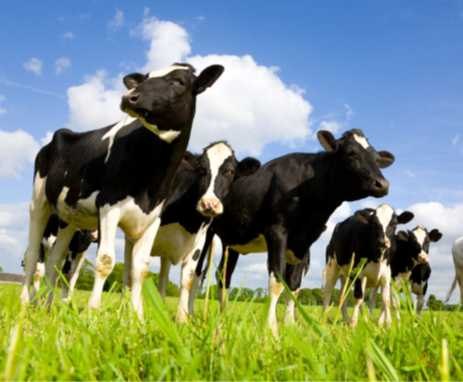Clinical Mastitis

5 Tips for Reducing Antimicrobial Use
This article by @RoseveanFarmVets focuses on clinical mastitis - often the main contributor to dairy antimicrobial use.
We know from looking at our sales of antimicrobial products that many dairy farms are already seeing the benefits of selective dry cow therapy.
1. Sampling; know your enemy!
It is good practice to sample every case of clinical mastitis. Take and freeze a sample before treatment (labelling it with cow number, quarter and date). If treatment fails or the mastitis recurs, we have a pre-treatment sample to refer to. Samples can be cultured and/or tested with PCR (Polymerase Chain Reaction), increasing the chances of a meaningful result. Once we know what organisms are responsible for the mastitis, we can advise on appropriate husbandry changes and treatment. It may also guide decisions on drying off and culling.2. Non- Steroidal Anti-Inflammatory Drugs (NSAIDs)
NSAIDs (e.g. meloxicam, keloprofen) improve treatment success and reduce recurrence of clinical mastitis, even in mild cases. If not already doing so, discuss with your vet the merits of using NSAIDs in mastitis treatment.3. Chronic mastitis and treatment failures
Discuss problem mastitis and high cell count cows with your vet. A few problem cows can account for a lot of antimicrobial usage. Has she had multiple cases this lactation? Has she not cured after treatment? These are the animals we may send off a milk sample for or they may be candidates for early drying-off or culling.4. Injectable antibiotics in mastitis
There is little evidence to support the use of injectable antibiotics for mastitis. The only animals likely to benefit are those which are systemically ill (e.g. severe E.coli mastitis) and even then evidence for the use is limited. Treatments such as fluids (oral/intravenous) and anti-inflammatory drugs are of more benefit. If still routinely using injectable antibiotics for mastitis treatment, revise your protocols with your vet.5. Vaccines
Startvac is a vaccine against E.coli, Staph. aureus and coagulase negative Staphs (CNS). For herds with significant levels of these types of mastitis, it can demonstrate a significant cost benefit by reducing the mastitis severity and decreasing milk losses.UBAC is a new vaccine that is proven to significantly reduce the incidence Strep. uberis mastitis. This is one of the most common forms of mastitis and can be responsible for recurrent or hard to cure cases.
Use of these vaccines should only be considered after assessment of farm suitability by a vet. Often milking routine and/or husbandry changes are required to get the full benefit from them.
Where do I start?
A good starting point is to complete an AHDB mastitis control plan for your farm. This is a wide-ranging farm audit concentrating on udder health that helps focus on potential problem areas.
Annual reviews of your health plan with your vet, as well as medicines courses such as Milksure, are important to ensure your team remain up to date with best-practice.
In summary, nobody wants to compromise animal welfare by denying cattle the treatment that they need. The latest initiatives are about thinking twice about the antibiotics we prescribe and deciding are they necessary, appropriate and being used correctly?
Antimicrobial resistance and residues in milk are a real concern for the reputation of the dairy industry.
Acting now meets these concerns head on and also reduces the pressures on finances and time caused by high levels of clinical mastitis in a herd.
- 1st July 2021
